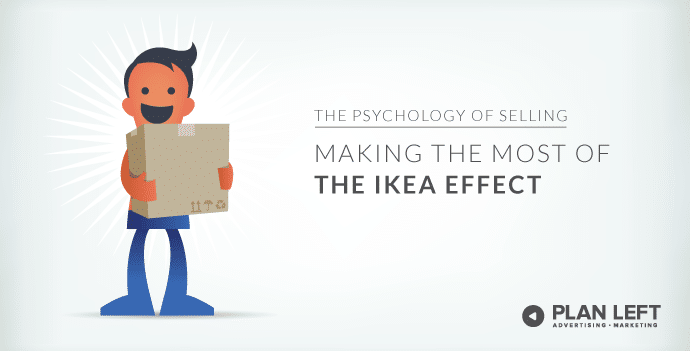
There is a piece of furniture in my house that I’ve tried to throw away for six years. Every time I’ve got my hands on it, ready to heft it down to the alley for the trash collectors, something stops me. Most of the time, that something is my husband, who has a deep connection to the “first piece of furniture we bought together.” Say it with me now: “Awwwwww!”
The sentimental value is certainly hard to overcome, but I’m not quite as attached. Something else keeps me from tossing that dresser out. For ages, I had no idea what that “thing” was, until I discovered the IKEA effect. Basically, this strange phenomenon inspires us to put more value on things we make ourselves. Which is kind of funny, because I was pretty irritated the day we bought it. Who wants to pay that much money for furniture that’s not already put together? Now, however, it’s the most valuable piece in our house.
Leveraging the IKEA Effect
Flat-pack furniture is nothing new. It’s been ticking people off for decades. That connection to the furniture also isn’t groundbreaking. Pride is a hard emotion to overcome. Unless you’re a flat-pack furniture company, you probably have no idea how to make this particular phenomenon work for your company. But you can.
Pride in ownership becomes some much more powerful when the buyer has some say in the finished product. This is the power you must harness—not the flat-pack furniture assembly method. You can give buyers that pride in many, many ways.
Ecommerce
Sure, as an ecommerce company, you’re better off providing products as they are. Your inventory issues are non-existent, you don’t have to worry about shipping mix-ups, and life is just generally easier. But what kind of relationships will you build with those customers? Are they likely to come back for more or recommend you to others? Will they spend more money later and cherish the items they buy?
You don’t have to make every product you offer customizable, but even one or two will make a difference. Giving buyers the chance to add their own personal touch to their purchases goes a long way toward building a connection, a rapport, a true affection for your company and the things you sell.
If you sell T-shirts, let buyers submit their own designs. If you sell jeans, have buyers submit exact measurements for the most perfect fit possible. Let buyers design their own shoes, skin care line, custom car pieces… The possibilities are endless. That connection gets even stronger if you have a process in place to let buyers watch their pieces being made. Are you open to the possibilities?
Service Providers
The customization and personalization process probably doesn’t seem like it applies to service providers. If a buyer hires you for a service, it’s probably because they either can’t or don’t want to do things on their own. Before you write off the IKEA effect, stop and think of the ways you could get those buyers involved.
Take a cleaning company, for example. The service seems pretty straightforward: buyer hires cleaners, cleaners show up and perform tasks, buyer basks in clean house. How can that process be customized? What if the buyer was able to choose the specific services instead of receiving a standard package? Cleaning companies could also allow buyers to choose the cleaning products used, so those who prefer particular brands or green cleansers will get exactly what they want. Those customers will likely pay more for the customized package, and they’ll also tell others how accommodating you are.
If you examine every aspect of your business model, you’ll discover ways to make this particular phenomenon work for you. Start building relationships with individuals instead of marketing to the masses. Sure, it’s hard, but the rewards are worth the cost.
If you’re looking for a branding and marketing company to help you make your vision a reality, we’re always here. We’re fans of the IKEA effect, which means you’ll get exactly what you want, every time.
Explore Latest Posts
Google says the quality of your webpage is a ranking factor, but what is ‘quality’ according to Google? That would ... read more
April 19, 2024
In 2011, Google first changed how content was written with the Panda Update by changing how keywords could be used ... read more
April 17, 2024
The latest Google algorithm changes have shaken the search marketing world. While the Google Spam update has finished, the Google ... read more
April 16, 2024
MARKETING insights
Join the Thousands Who Receive Our Twice-Monthly Newsletter.
It's hard to keep up. Our newsletter is packed with buyer behavior insights, the latest marketing and technology updates, work/life balance tips, and—because we ❤️ our support staff—adorable pets looking for forever homes. Only twice per month. No clogged inboxes. You can't say no.




